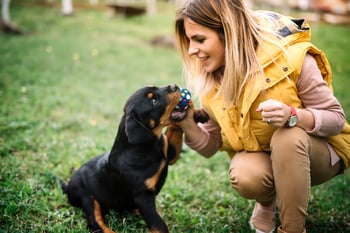Dog Behavior Tips for Kennel & Dog Daycare Attendants
While dog daycare might be a paradise for one dog, it could be a nightmare for another. It’s the kennel and dog daycare attendant’s job to anticipate issues and help the dogs relax and have a good time. Just like people, dogs can get stressed, anxious, or afraid. But unlike people, dogs can’t just come out and tell you if something is wrong (Dog temperament tests are a good indicator, too!)
But the good news is, there are ways to identify a dog’s emotions by watching their behavior and body language. Check out these dog behavior tips for kennel and dog daycare attendants.
#1 Observe the Dog’s Body Language
 Since dogs can’t talk (no matter how hard they try!), it’s crucial for kennel workers and dog daycare attendants to understand dog body language. Dogs use posture, body language, and facial expressions to interact with people. Here are some common dog behaviors and their meanings:
Since dogs can’t talk (no matter how hard they try!), it’s crucial for kennel workers and dog daycare attendants to understand dog body language. Dogs use posture, body language, and facial expressions to interact with people. Here are some common dog behaviors and their meanings:
Tail Wagging
If a dog’s tail is wagging, they’re happy, right? Wrong. Tail wagging is a common misconception for happiness and friendliness. But, a wagging tail only indicates the dog is emotionally aroused. It can mean happiness, but it could also be fear or frustration. To decipher the dog’s emotions, check out the tail’s position and the wag’s direction and speed:
- Speed. A slow, long, side-to-side tail wag indicates a relaxed dog. This type of wag shakes their whole body. Think of the wags you get when you come home and greet your dog. The faster the wag, the more aroused the dog. A quick, twitchy wag indicates a greater level of arousal, maybe in a negative way.
- Direction. A study on tail-wagging revealed that dogs wag their tails more to the right when feeling positive, like socializing with their pet parent. Conversely, dogs’ tails wagged more to the left when they felt something negative. The circular tail wag, where the tail spins in a circle, is a happy wag. This type of wag occurs when a dog is saying hi to someone they really love.
- Position. Basically, the higher the tail, the more confident the dog is feeling. Dogs with their tails tucked between their lugs or pointing down are scared and nervous. Dogs with their tails raised like a flag are confident, possibly aggressive. A relaxed dog holds their tail in a neutral position.
Posture
How a dog distributes their weight indicates several clues about their emotions. A dog who is hunched closer to the ground or cowering is afraid. A dog that rolls on their back and exposes their stomach might be asking for a belly rub, but it also could mean they are feeling significant anxiety. A dog that shifts their weight forward, when combined with other cues like a high twitching tail, indicates aggression. The dog is trying to look bigger. A dog who puts their chest on the ground and their bum up in the air indicates they want to play with people or other dogs.
Raised Hair on Neck and Back
When a dog’s hackles are raised, it means the hair along their neck and back is standing up. The reaction is involuntary, like goosebumps in people. Raised hackles indicate the dog is aroused, but not always in a negative way. The dog could be feeling stressed, excited, or very curious about something.
Eyes
Soft eyes, meaning relaxed lids that can look like the dog is squinting, indicate a calm and happy dog. A dog’s eyes go hard when they seem to turn cold. The dog might be guarding food or a toy or feeling aggressive. Dogs can also hold a stare at something for a long time, signaling a warning. When a dog feels stressed, they avoid eye contact and look away. Avoiding eye contact is easily misinterpreted by people, as they think the dog is stubborn. But in reality, the dog is showing distress. When a dog shows the whites of their eyes, they are worried or stressed. For example, if they think someone will steal their toy or bone.
Facial Expressions
Dogs yawn when they’re stressed and to soothe themselves (and others) in tense conditions. Try yawning at a stressed dog to comfort them. They might even yawn back.
Dogs lick their lips after a meal, but they also lick their lips when nervous. The lick might be too quick to notice, but if you happen to catch it, know that the dog is anxious.
A dog’s smile is confusing. Just like with humans, dogs have different types of smiles. When paired with a snarl, a dog’s smile with the front teeth displayed is a warning and a sign of aggression. A true smiling dog also shows their front teeth, but the intention is the exact opposite. You’ll find a smiling, happy dog with a loose posture.
#2 Be Mindful of Your Approach
When meeting a new dog or greeting a nervous dog at the kennel or dog daycare, slowly and quietly walk toward them with your palm out. Speak softly and use their name to indicate you’re friendly and not a risk.
Things like “Hi Stella, what a pretty girl you are” can help Stella calm down. If you have a treat handy, offer it to her and praise her after she takes it. If Stella is happy and excited, she will probably jump up, wiggle her tail, and lick you. But if Stella is visibly stressed and not engaging with you, she is scared. She could see you as a threat. She might growl, bark, or nip at you in warning to back off. She might back away from you. It’s okay if Stella is afraid.
Don’t take it personally. She will sense if you feel anxious and jumpy, which will make her more afraid. Instead, leave her alone. Be calm, praise her, and toss treats around you to entice her to come to you. She will eventually come to you once she realizes you’re okay.
#3 Observe Dog Behavior
Not only is dogs’ body language an indicator of their emotional state, so is behavior. A dog who spends a lot of time alone or hiding is afraid and stressed. To help comfort fearful dogs, consider strategies to reduce their stress. Thunder shirts and pheromone diffusers have been proven to help calm dogs. A super aroused dog may be running around, even more than usual. Typically, this means their stress levels are high, but the dog doesn’t know how to handle the stress. To bring their arousal levels down, consider engaging in activities that require a dog to focus, such as:- Playing games that require the dog to think.
- Working on training and skills.
#4 Look Out for Signs of Illness
It’s essential to watch for signs of illness, both for the dogs’ benefit and infection control. Questions dog kennel and daycare attendants should ask include:- Does the dog seem more sluggish than usual?
- Does the dog seem fatigued?
- How much water are they drinking?
- Are they urinating more than usual? Is it normal in color? How are their stools?
- Are their eyes, ears, or nose leaking anything?
#5 Label Dog Behavior
It helps to label and classify dog behavior to enable staff to identify and prepare for any situation. Revelation Pets software helps you easily track pet behavior for every pet under your care. Here are three categories of dog behavior and their associated actions:- Separation anxiety: Whining, barking, chewing, digging, crying, urinating, defecating
- Aggression: Snarling, barking, lunging, biting, growling, rigid posture
- Stimulus reactivity: Barking, lunging
These dog behavior signals don’t act alone. They work as a package that communicates a dog’s feelings and intentions. Understanding the dog’s emotional state helps you predict behavior and prevent problems before they occur.






